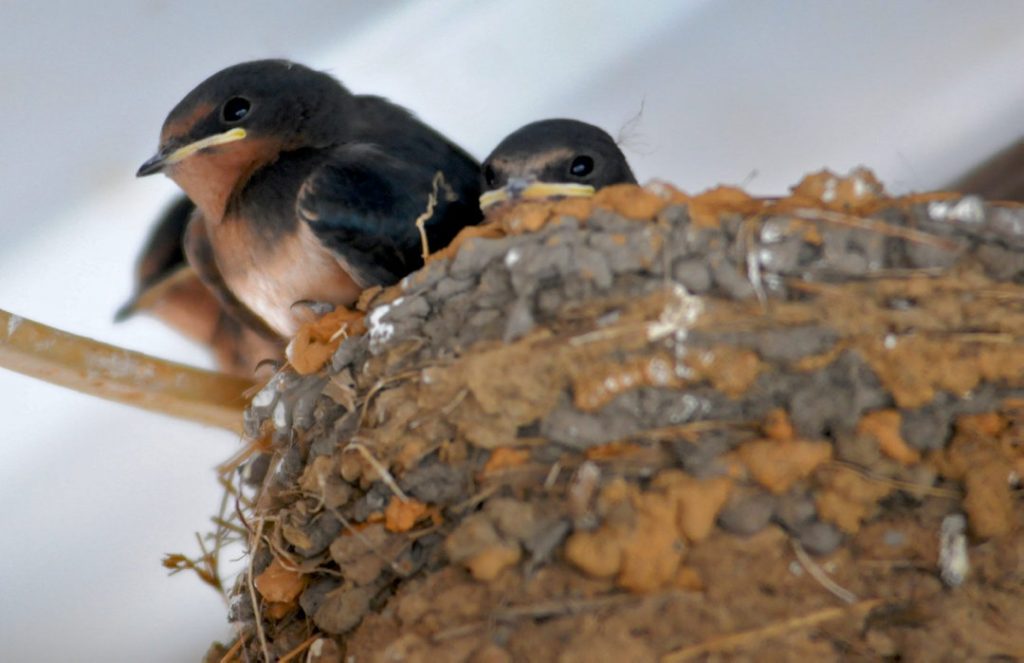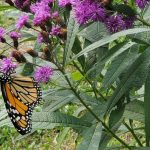BY LEAH ZERBE
“How many nearby caterpillars do a chickadee mom and dad need to find near the nest to feed their babies? To get strong enough to leave the nest?” I asked elementary kids during a recent environmental science session.
“10?” one student guessed.
“Higher,” I say, pointing to the sky.
“100?”
“Higher.”
This went on for a bit, until we landed on 6,000.
At a minimum, an adult chickadee pair needs to scour nearby trees, shrubs, grasses, sedges and herbaceous plants for thousands of caterpillars to feed a single clutch of offspring.
Bird parenting is no joke.
It also highlights the fact the bird feeders aren’t enough.
If we truly want to care for birds, we need to support them through their entire lifecycle. And that requires planting the right native plants — indigenous plants that were growing here before our ancestors came over from other parts of the world and started erasing them from the landscape. (Sadly, Europeans renamed many of Pennsylvania’s most beneficial native plants “weeds,” and that stigma still scares many people from planting them today.)
What’s killing our birds?
Today, the need for indigenous plants is becoming very obvious. As a mysterious ailment kills birds across the Mid-Atlantic region, experts are pleading with the general public to take down their bird feeders. If whatever is ailing our songbirds — causing crusty eyes, neurological symptoms and death — is contagious, bird feeders and waterers are serving as breeding grounds for rapid spread.
The truth is, wildlife authorities aren’t sure what’s impacting our local birds. But here’s what isn’t, according to the latest round of diagnostic tests taking place on both the state and national levels. According to a Penn State Extension update, so far, none of the impacted birds tested positive for: Salmonella and Chlamydia (bacterial pathogens); avian influenza virus, West Nile virus and other flaviviruses, Newcastle disease virus and other paramyxoviruses, herpesviruses and poxviruses; and Trichomonas parasites. Toxicology tests are ongoing.
In the meantime, please practice the precautionary principle and take down your bird feeders and waterers. As many experts have noted, it’s summertime, and natural sources of food are more abundant. They’re just extra abundant if your landscape contains some of the many beneficial native trees that provide food for breeding birds, including, but not limited to:
- Oaks (white, red, pin, etc.)
- Shadbush (Amelanchier canadensis)
- Shadblow serviceberry (Amelanchier arborea)
- Birch (yellow, sweet, river, gray)
- Shagbark hickory
- American beech
- Alternate-leaf dogwood
- White pine
- Basswood
- Red and sugar maples
- Ironwood
In addition to taking down bird feeders and waters temporarily, the Pennsylvania Game Commission is also asking the community to:
- Report any birds that you find dead from apparent illness using the Bird Mortality Report Form at www.vet.upenn.edu/research/centers-laboratories/research-initiatives/wildlife-futures-program.
- Wash feeders and bird baths and soak them in a 10% bleach solution before putting back out after the outbreak subsides.
- Wear disposable gloves to collect any dead birds, and place them in plastic bags for disposal in trash.
- Keep pets away from sick or dead birds
- Wash your hands with soap and water after handling birds or feeders.
Contact the writer: leah.zerbe@gmail.com




